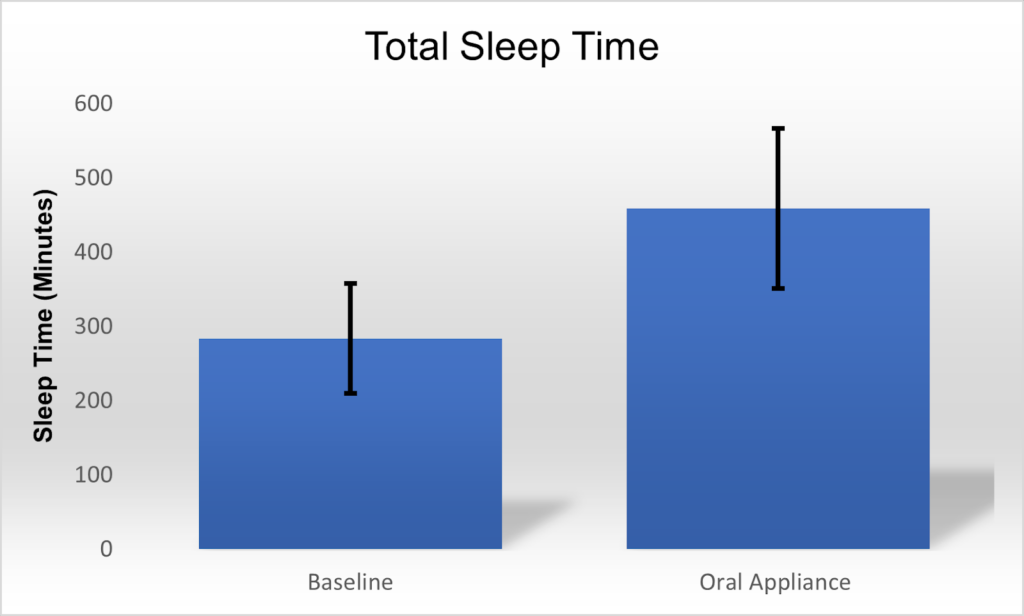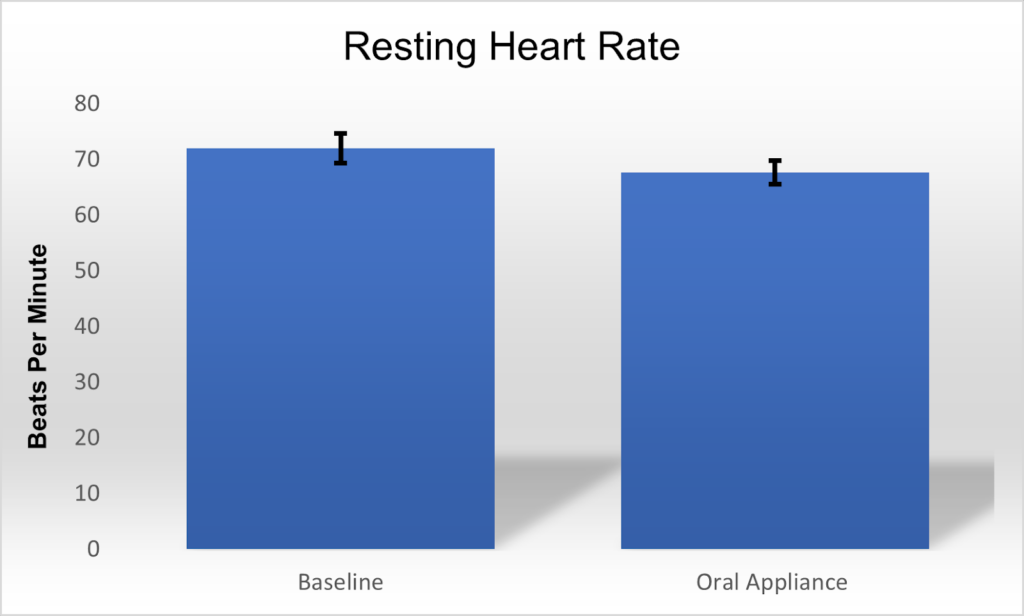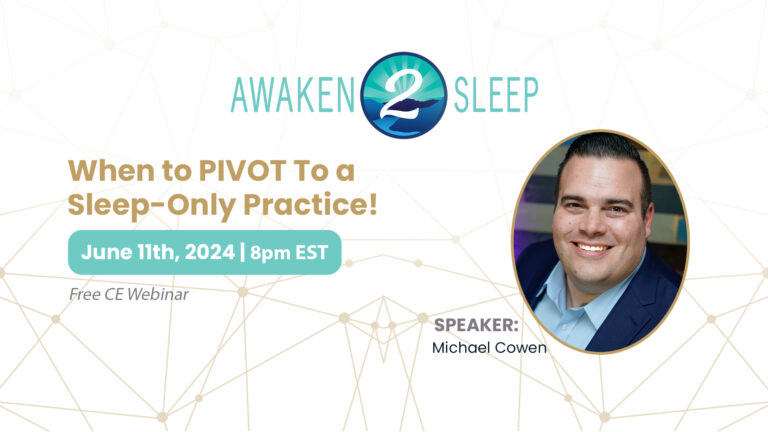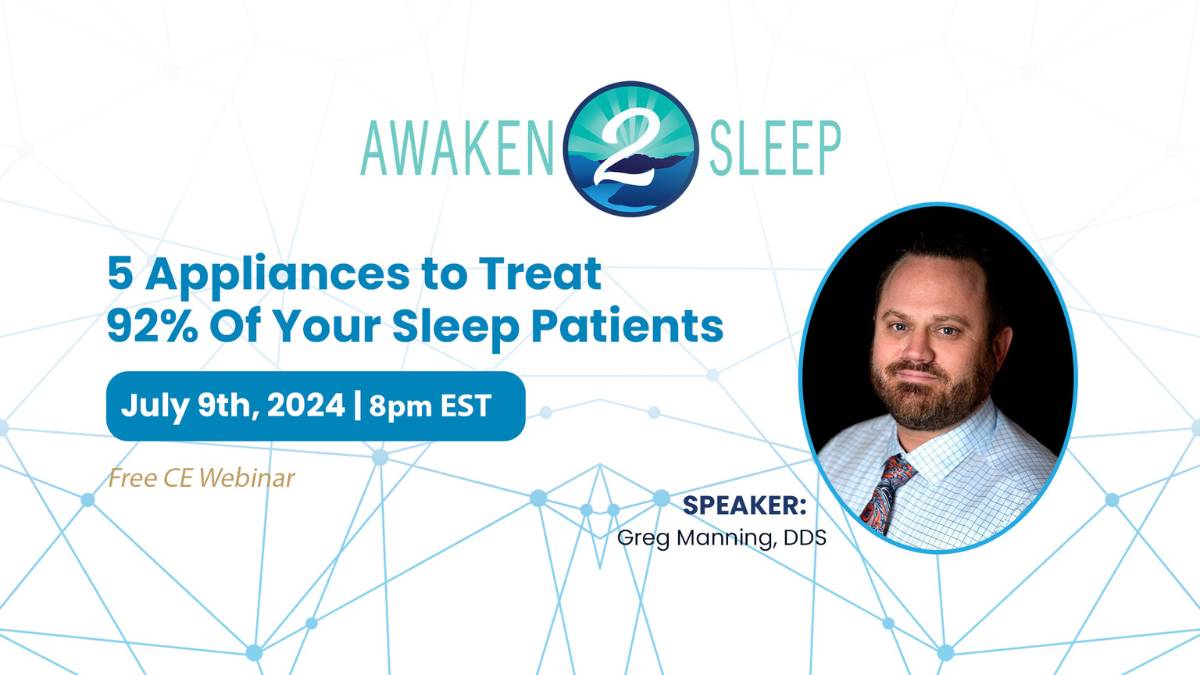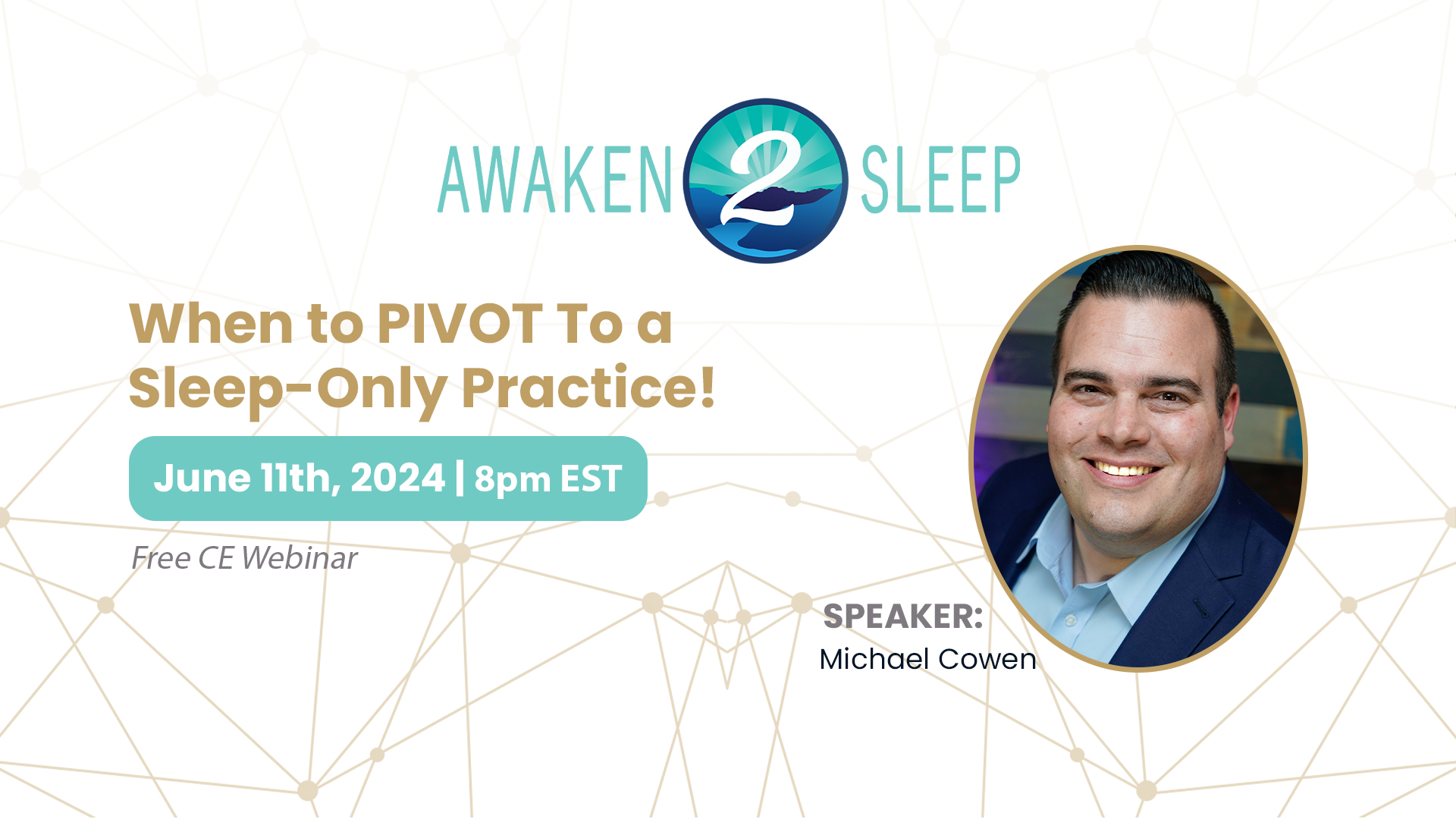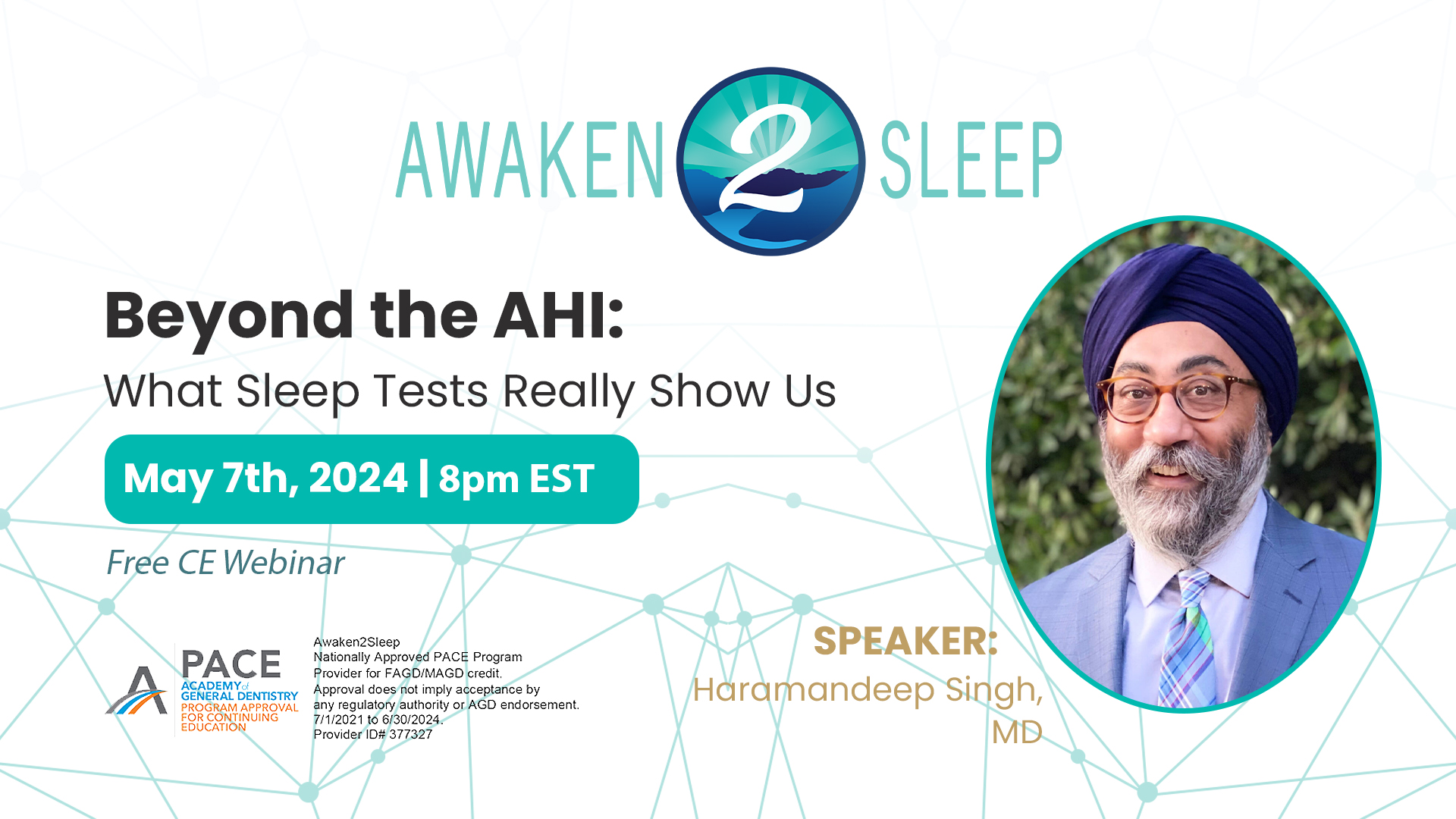Wesper: Enhancing Dental Practice in OSA Treatment and Monitoring
Oral Appliance Therapy is Quickly Gaining Popularity for the Treatment of OSA
Oral Appliance Therapy (OAT) for Obstructive Sleep Apnea (OSA) has become a popular alternative to CPAP in recent years, especially for patients with mild-moderate severity. Studies have demonstrated that OAT adherence is consistently higher than PAP1 and patients surveyed prefer OAT over CPAP due to ease of use, comfort, and shorter adjustment times2.
Due to the increased popularity of OAT, dental practitioners that treat sleep-disordered breathing have seen a significant increase in patients seeking treatment. Further, dentists are often the first medical professionals to identify at-risk patients that have not previously sought out sleep testing.
Patients receiving OAT for their OSA must undergo a series of adjustments to their appliance, called titrations. Additional expensive sleep studies to confirm the success of titration may not be readily available, forcing many dentists to rely on how the patient “feels” instead of using objective data to guide treatment. Unlike CPAP, monitoring patient OAT usage is difficult and can result in low adherence rates. The introduction of home sleep tests (HST) in recent years have helped to improve titration.
Wesper, a Novel Home Sleep Test that Improves the Efficiency of Oral Appliance Titration and Adherence Monitoring.
Wesper is a reusable, clinically validated, FDA approved combination Type III home sleep test and long-term monitoring and sleep health platform. The Wesper device comprises two small, soft and flexible patches that adhere to the abdomen and thorax and connect wirelessly to a mobile device. When paired with a pulse oximeter, Wesper becomes a diagnostic sleep tests that is 95% correlated to Polysomnography (PSG) for the detection of sleep apnea.
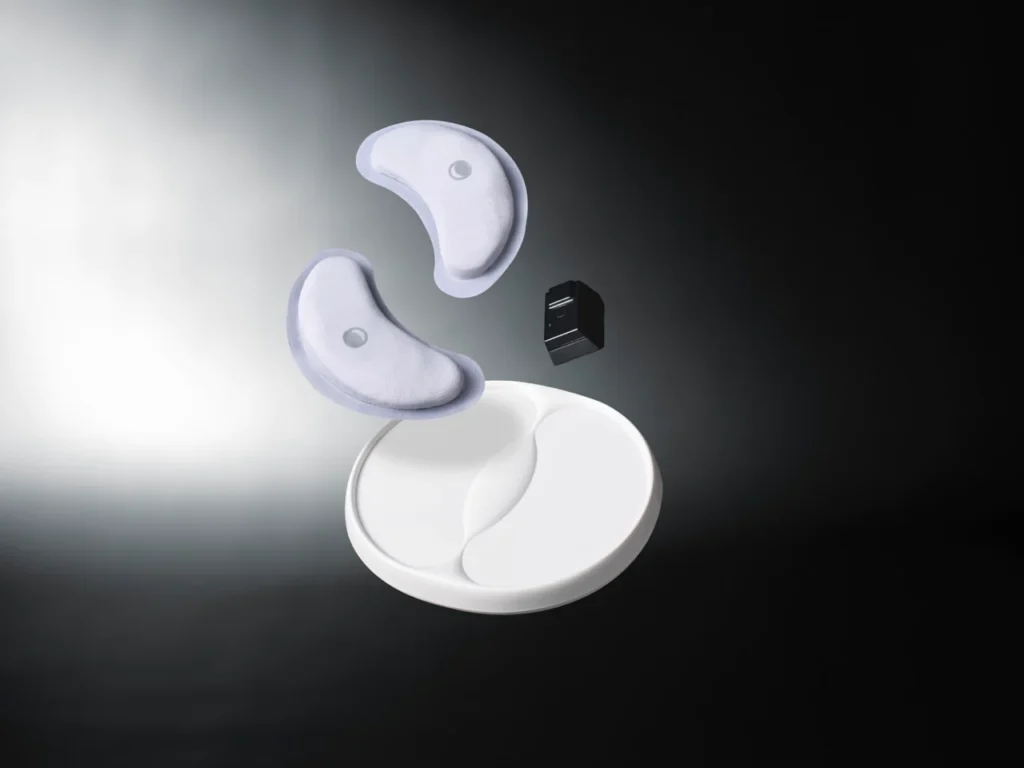
Without the pulse oximeter, Wesper can be used nightly to continuously measures respiration, body position, snoring, and sleep quality metrics, making it an easy and pain-free solution to objectively evaluate breathing during the oral titration process. Wesper is also commonly used to monitor OAT adherence during the first months of use.
Dentists that use Wesper in their clinics have access to a provider portal, which can be used to quickly visualize patient breathing and sleep metrics. Patient reports are uploaded to the portal immediately after the test is completed and dental staff have multiple options to visualizing patient data. Data visualization includes a “trends” view, which shows breathing and sleep metrics from all completed tests on one graph, making assessment of each titration objective and clear. Dentists also have access to each Wesper, which contains detailed information about each test, clinical grade hypnograms, patient questionnaires, and access to Wesper’s sleep experts.
Placing Data Into The Patient’s Hands Improves Adherence and Health Outcomes
In addition to data collection, Wesper is also a long-term sleep health platform, which allows the patient to be directly involved in their OSA treatment. On completion of each Wesper test, the patient receive an interactive and easy to understand sleep report, which allows them to see how well their oral appliance is working. Wesper patients also have access to sleep experts, which work in coordination with their dentists to improve the patient’s overall sleep improvement journey.

How Wesper is Being Used by Dental Practitioners Across the U.S.
Below, we present several case studies demonstrating how Wesper is currently being utilized to identify patients that are at risk for OSA and improve the efficiency of oral appliance therapy.
Wesper Objectively Identifies Patients at Risk for OSA
The patient presented is a 46-year-old female with a Body Mas Index (BMI) of 30, and no prior diagnosis of sleep disordered breathing. The patient presented to her dentists for an assessment of tooth decay from chronic, severe Gastroesophageal Reflux Disease (GERD). After evaluation, her dentist suspected her GERD was related to possible sleep disordered breathing, despite the patient being asymptomatic for common OSA symptoms, and recommended Wesper to screen. The patient was asked to take 3-6 Wesper tests and return for consultation.
The test revealed that the patient had reduced respiratory quality (Fig #1), as marked by an increased number of respiratory events, periods of increased respiratory effort and reduced airflow (M = 60.6, SD = 12.2), especially in supine position (M = 47.8, SD = 10.8). GERD is a common comorbidity in OSA patients and can improve with treatment of breathing disorders. It was therefore recommended that the patient undergo formal testing for sleep apnea followed by oral appliance therapy.
Wesper Improves Efficiency and Accuracy of Oral Appliance Titration
The patient presented is a 59-year-old female with a Body Mass Index (BMI) of 26, and previous diagnosis of mild OSA. The patient presented to her dentists with a prescription for OAT after unsuccessful use of CPAP. On consultation, her Dentists provided her with a Wesper kit to use during oral titration. She was advised to conduct 3 baseline tests without the oral appliance, 3 tests with the oral appliance, and 3 tests after titration.
The patient’s baseline tests were consistent with her previous diagnosis of mild OSA and demonstrated an average of 69 breathing events (SD = 25.5). Application of OAT didn’t immediately improve breathing quality (Average Total Breathing Events: M = 64.6, SD = 23.1). Use of OAT after a single titration significantly improved breathing quality and cut the total number of breathing events by half (Average Total Breathing Events: M = 33, SD = 14.1). With the use of Wesper, the oral titration process was completed in 12 days.


Fig #2: Objective improvement in respiration before and after oral appliance titration.
Wesper Objectively Demonstrates Improvement of Sleep Quality With Oral Appliance Therapy
One of the key factors that contributes to patient adherence with their sleep apnea therapy is whether they perceive their sleep quality has improved with treatment 3. While HST’s can measure respiration, most don’t have the ability to track longitudinal improvements in key sleep metrics. Additionally, people are generally poor at qualitatively judging their sleep quality 4.
Wesper helps to improve patient adherence by placing respiratory and sleep quality data directly in the hands of the patient, allowing them to proactively participate in their treatment journey. Wesper also tracks treatment adherence, making it easier for health professionals to monitor their patients during the adjustment period.
We present a 63-year-old male with a BMI of 26.3 and a history of moderate obstructive sleep apnea and snoring. The patient was referred for OAT after failing to adjust to CPAP. On completion of the baseline tests, the patient’s results were consistent with their previous diagnosis of moderate sleep apnea (Fig #3; Mean Breathing Events Per Hour = 26.6, SD = 3.1). Titration significantly improved breathing quality (Mean Breathing Events Per Hour = 5.3, SD = 2.3).

In addition to respiratory metrics, Wesper also collected longitudinal sleep metrics to demonstrate how OAT was objectively improving sleep quality. These metrics include sleep efficiency (Fig #4), sleep time (Fig #5), and resting heart rate (Fig #). Sleep efficiency increased from 83.6% to 91.0%. Total sleep time improved from 323.6 minutes to 548.6 minutes on average. Finally, mean resting heart rate decreased from 72 beats per minute to 67.
In Conclusion
Wesper allows dental professionals to quickly and painlessly screen their patients for sleep disordered breathing. Wesper also provides an easy and objective method for tracking the progress of respiratory improvement during oral appliance titration. Data collected during titration is placed into the hands of the patient, allowing them to be involved in their sleep apnea improvement journey, which raises enthusiasm, therapy adherence, and overall patient satisfaction.
Ready to find the best sleep test for your practice? Ready to find the best sleep test for your practice?
About the Author

Chelsie Rohrscheib, Ph.D.
Dr. Chelsie is head sleep expert at Wesper, neuroscientist, and sleep consultant with over 10 years of experience in the field of sleep. She holds a bachelor’s degree in Biomedical Science with Honours and a PhD in Neuroscience with a specialty in sleep genetics. She also worked in clinical trials where she oversaw sleep apnea research. Besides living and breathing all things sleep, you can usually find Chelsie cuddling up to her cats (who are probably sleeping) and enjoying a good book!
References:
1. Rotenberg BW, Murariu D, Pang KP. Trends in CPAP adherence over twenty years of data collection: a flattened curve. J Otolaryngol Head Neck Surg. 2016 Aug 19;45(1):43. doi: 10.1186/s40463-016-0156-0. PMID: 27542595; PMCID: PMC4992257.
2. Saglam-Aydinatay B, Taner T. Oral appliance therapy in obstructive sleep apnea: Long-term adherence and patients experiences. Med Oral Patol Oral Cir Bucal. 2018 Jan 1;23(1):e72-e77. doi: 10.4317/medoral.22158. PMID: 29274155; PMCID: PMC5822544.
3. Weaver TE, Grunstein RR. Adherence to continuous positive airway pressure therapy: the challenge to effective treatment. Proc Am Thorac Soc. 2008 Feb 15;5(2):173-8. doi: 10.1513/pats.200708-119MG. PMID: 18250209; PMCID: PMC2645251.
4. Harvey AG, Stinson K, Whitaker KL, Moskovitz D, Virk H. The subjective meaning of sleep quality: a comparison of individuals with and without insomnia. Sleep. 2008 Mar;31(3):383-93. doi: 10.1093/sleep/31.3.383. PMID: 18363315; PMCID: PMC2276747.




